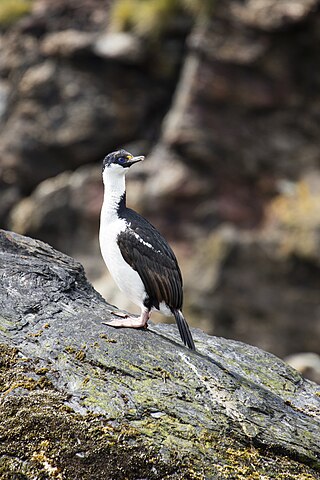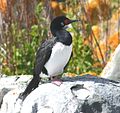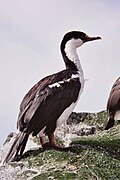Top Qs
Timeline
Chat
Perspective
Blue-eyed shag
Genus of birds From Wikipedia, the free encyclopedia
Remove ads
Leucocarbo is a genus of birds in the family Phalacrocoracidae. Several species within the genus are collectively known as blue-eyed shags. This is a group of closely related cormorant taxa. Many have a blue, purple or red ring around the eye (not a blue iris); other shared features are white underparts (at least in some individuals) and pink feet.[1]
They are found around the colder parts of the Southern Hemisphere, especially near southern South America, Antarctica, and New Zealand. Many are endemic to remote islands. Determining which types are species and which are subspecies of what larger species is problematic; various recent authorities have recognized from 8 to 14 species and have placed them in a variety of genera. The common names are even more confusing, "like myriad footprints criss-crossing in the snow and about as easy to disentangle." Only one common name is given for most species here.[1]
Remove ads
Taxonomy
Summarize
Perspective
The genus Leucocarbo was introduced in 1856 by the French naturalist Charles Lucien Bonaparte.[2] He did not specify a type species but this was designated as the guanay cormorant by William Ogilvie-Grant in 1898.[3][4] The name Leucocarbo combines the Ancient Greek leukos meaning "white" with the genus name Carbo introduced by Bernard Germain de Lacépède in 1799.[5]
A molecular phylogenetic study published in 2014 found that Leucocarbo is sister to the American cormorants in the genus Nannopterum; the genera split between 6.7 - 8.0 million years ago.[6]
The genus contains 15 species:[7]
Remove ads
References
Wikiwand - on
Seamless Wikipedia browsing. On steroids.
Remove ads















